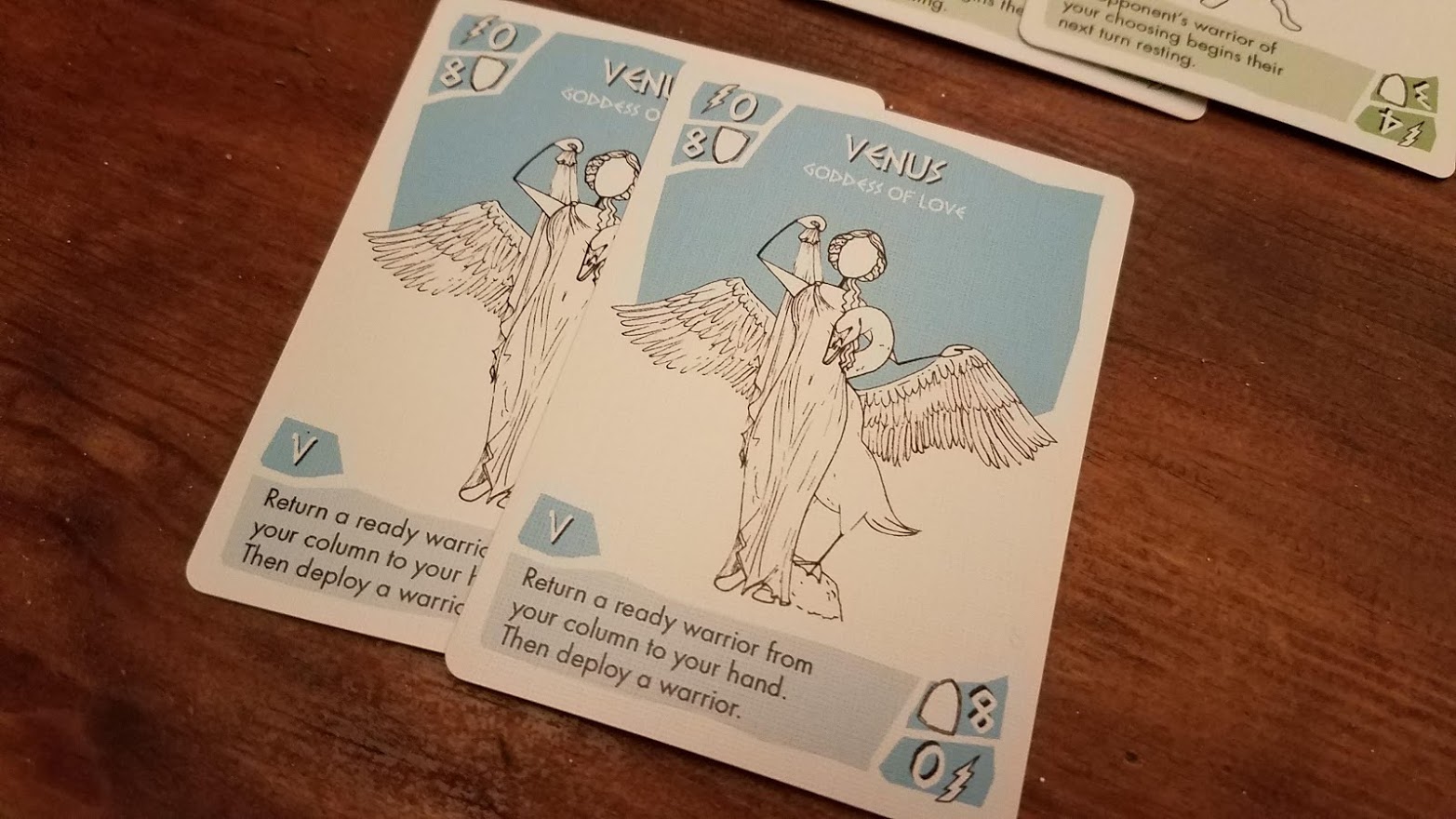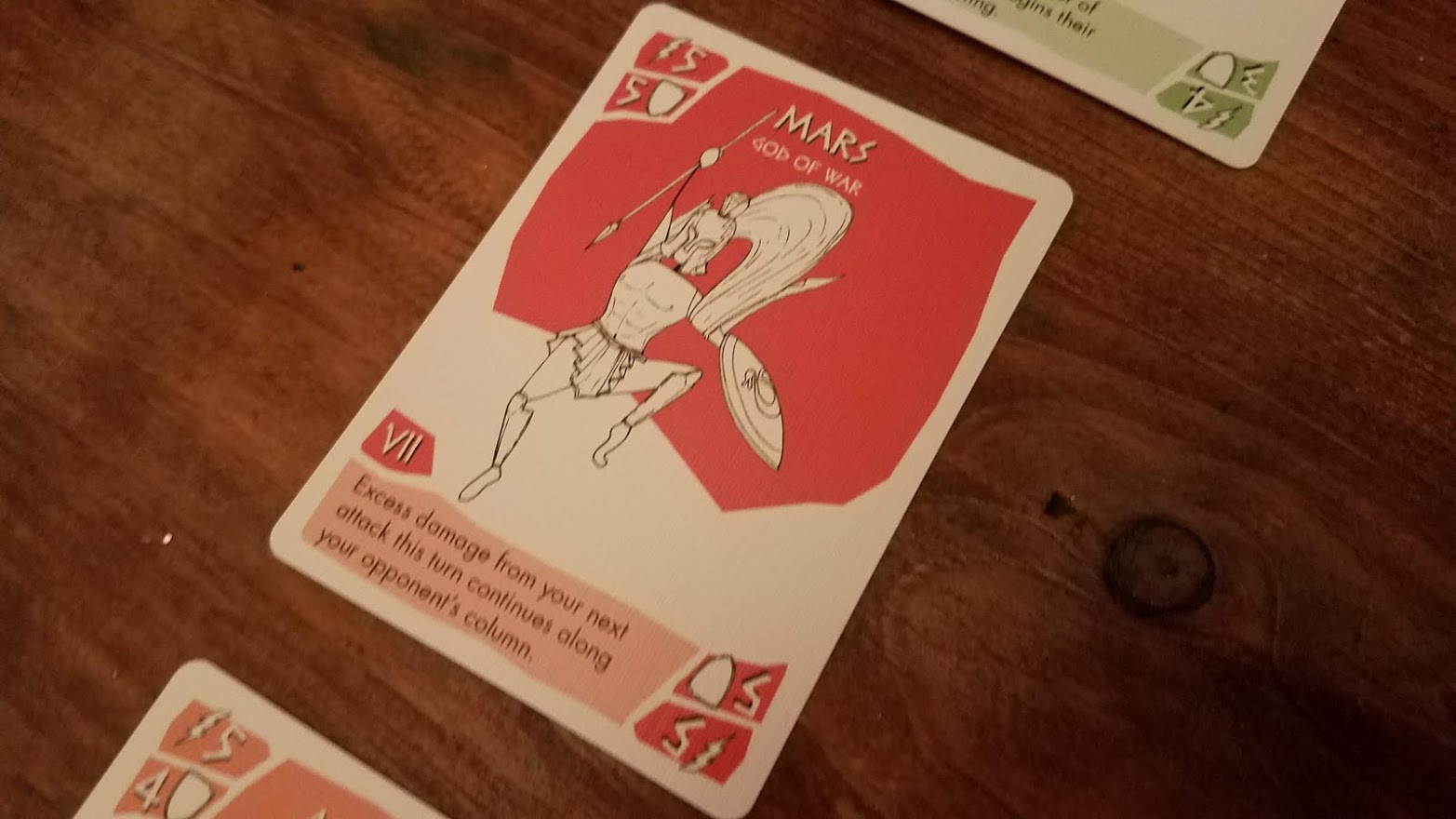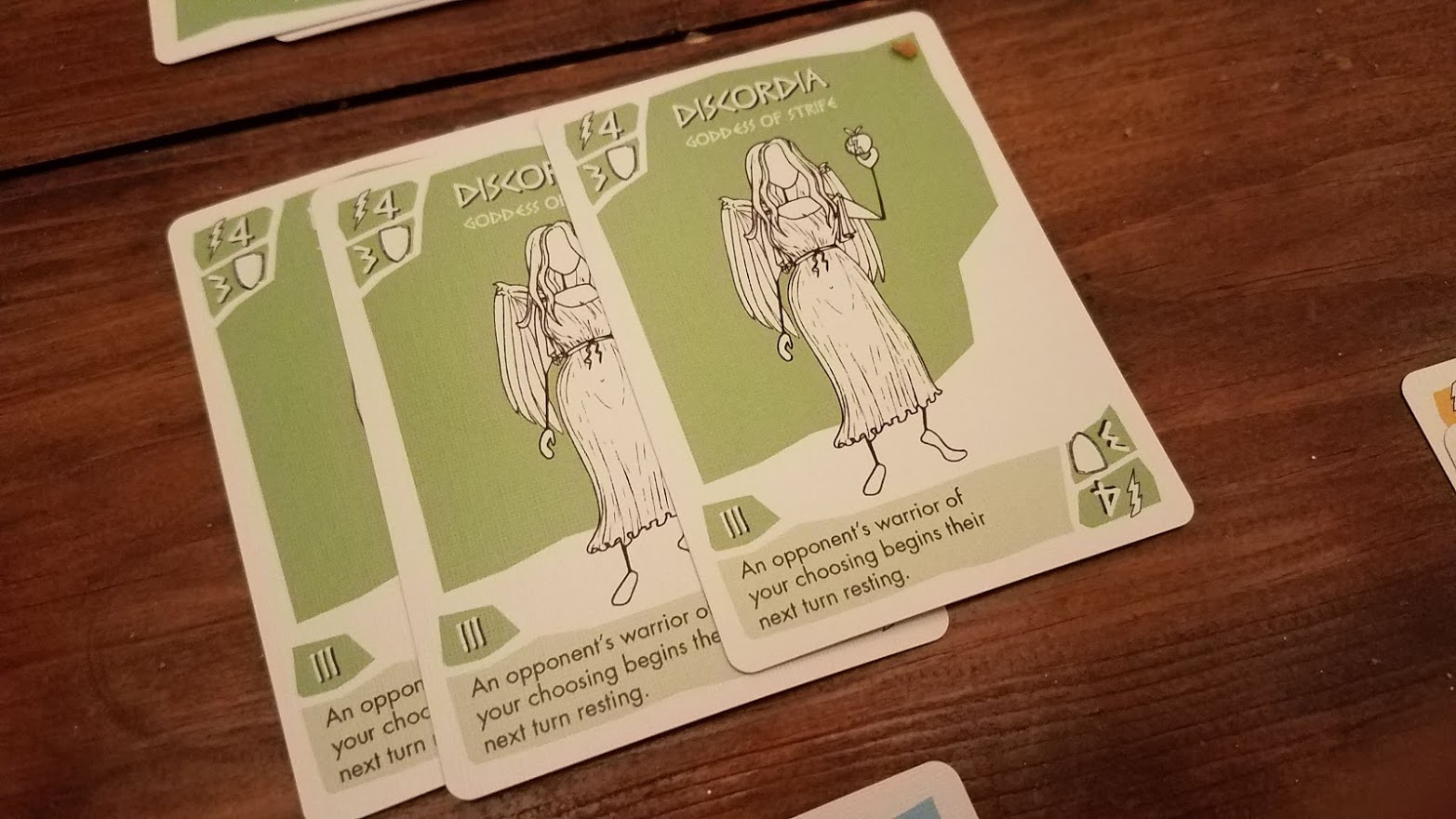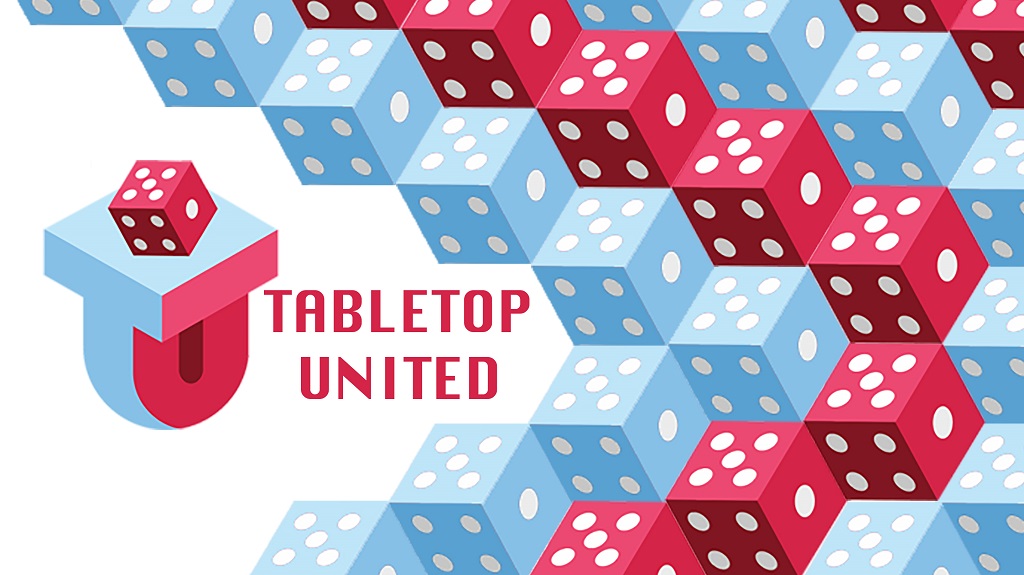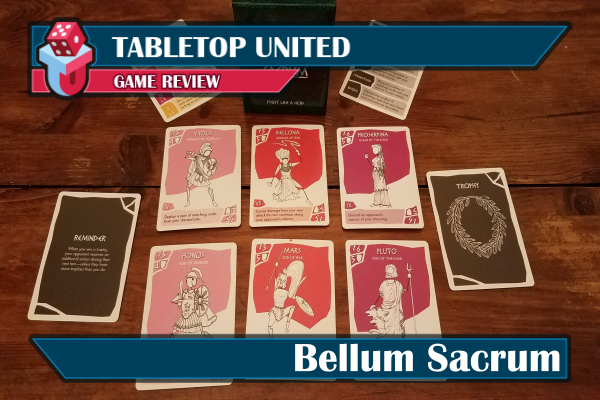Bellum Sacrum Review
Designer: Anthony Gibbins
Artist: Laura Jenkinson-Brown
Publisher: Bow String Games
Year Published: 2019
No. of Players: 2
Ages: 14+
Playing Time: 20-50 minutes
Main mechanic / Theme: Hand management & Set collection / Greek Gods
Bellum Sacrum hits the right spot for gamers looking to play as Greek Gods testing their skills against other Greek gods on the battlefield.
Find more info on Board Game Geek.
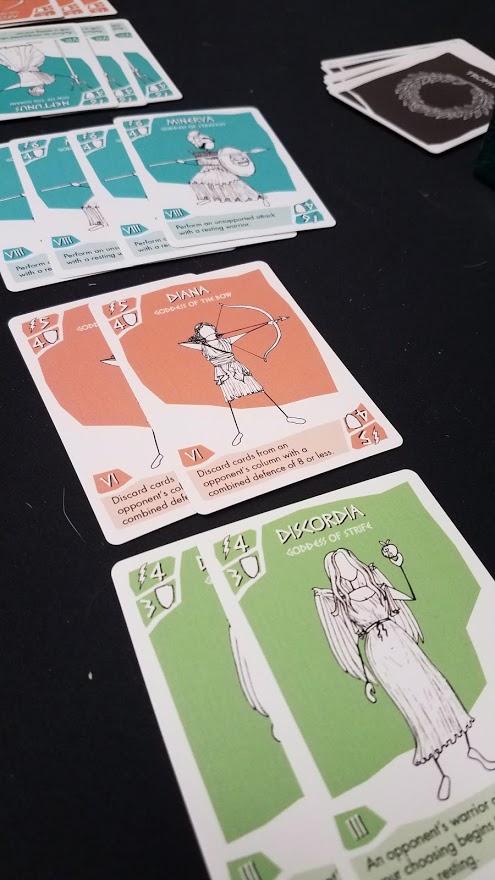
Overview:
Bellum Sacrum is a two-player competitive card game where Greek Gods form a battle column to test and hone their skills against other Greek Gods. Each player uses identical decks of 42 cards (artwork is different for each deck) to build a hand of cards in which they can then use to build their column of warriors or discard to “invoke” special abilities. The more copies of a card in play attacking, supporting, defending, or invoking is more powerful than a single copy of that card. Managing the sets of cards in hand and in play is important, as players must decide to use the cards for offense or defense, or for using them for their special abilities (or on the other side, as defense against invocations from your opponent).
Gameplay and mechanics:
Gameplay consists of players managing their hand of cards hoping to build sets of each character in order to make stronger attacks, defend against attacks, or using or canceling special abilities. The goal is to defeat the other Gods by removing them from the battlefield in order to earn trophies.
Players have four actions each turn and have the following options availabe: Draw, Deploy, Attack, Invoke, and Strengthen.
After players shuffle their deck, they will draw five cards. The hope is that they get a variety of warriors (Greek gods) and also sets or duplicates of those warriors. A player will create a column of warriors with three spots- front, middle, and back. It's almost always beneficial to use your first action to draw new cards to provide more game play options. Drawing allows you to draw three new cards into your hand. Deploying a set of warriors means to take at least one card (warrior) from your hand and place them in the first avaialable space in the column. Deciding which warrior cards to deploy and in what order- Front, Middle, Back- is vital in defending against your opponent. Each warrior has an attack and defense strength, and using a “Strengthen” action allows you to add more warriors of the same type to that position, making them stronger in both defense and offense.
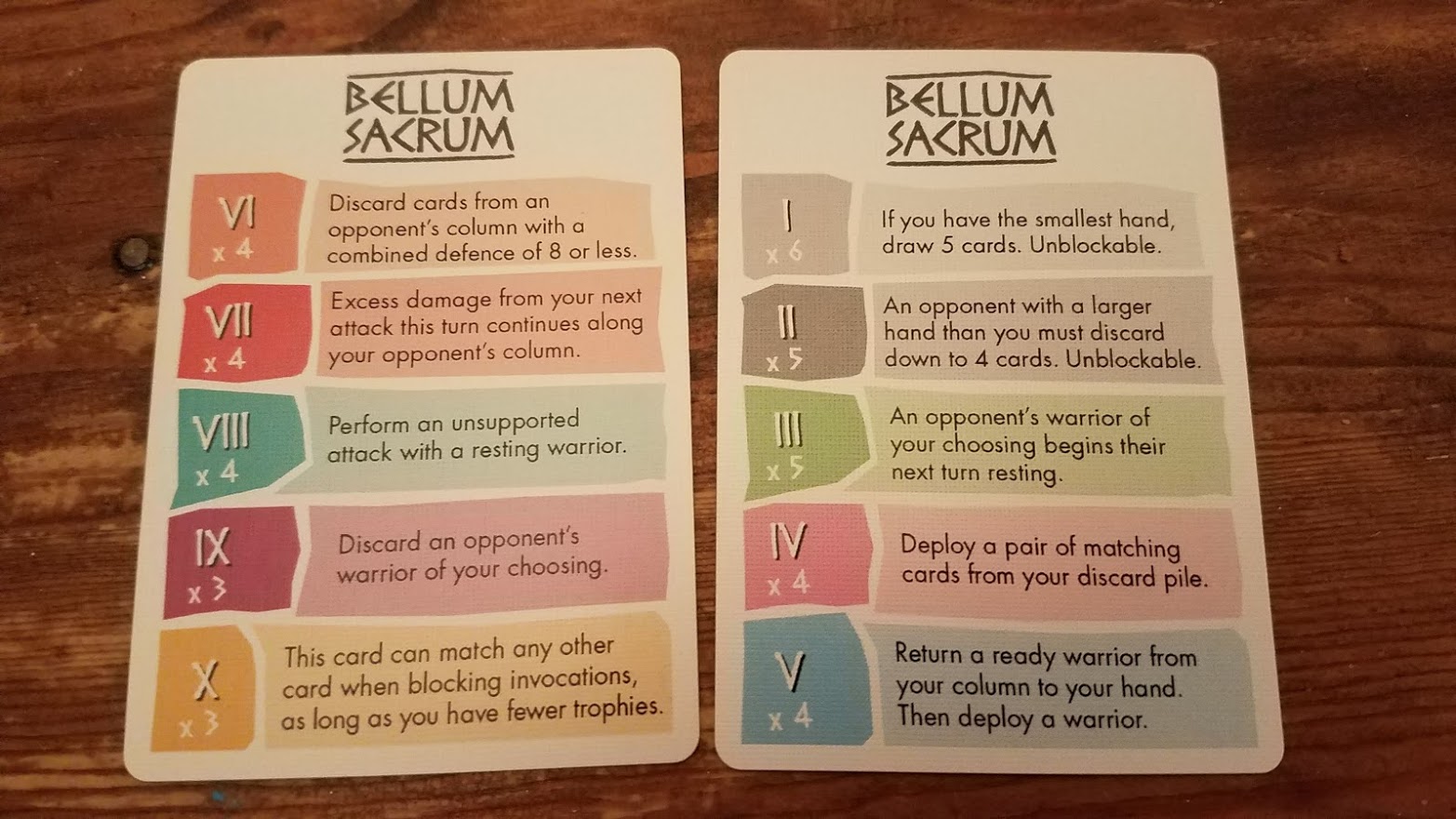
Invoking is an interesting option as each type warrior card has their own special ability. To use that ability, use an action to “invoke” and discard that card. You may use multiple copies of the same card to make the invocation less likely to be canceled. After playing the invocation, your opponent can play the same type of warrior card and match the number you played in order to block that invocation. If the invocation isn't blocked, that ability carries through. There are several different invocations such as allowing unblocked damage from one location in the column follow-through to the next location, drawing more cards, and pulling cards from your discard, and more. Choosing whether to use strong invocations or saving those warrior cards to deploy is important. If you use them to invoke, you can't use them to attack or defend later in the game. However, that invocation can help you defeat your opponent's warriors to earn trophies. Finding the right balance of what warriors to deploy versus using them to deploy is the most interesting aspect of the game.
Attacking the opponent's column is the only way to earn trophies. Trophies win the game and you can't sit back and let your opponent take the offensive. Using the attack action means you count up the offensive strength of the warriors in the front row of your column and comparing it to the defensive strength of the opponent's front row warriors. If the attack strength is higher than the defense, then those warriors on the opponent's side are removed and discarded. If you defeat all of your opponent's warriors, don't forget to collect your trophy!
Another option on your turn is to spend an action to “strengthen” your current warriors. If you have cards in your hand that matches the cards in your column, you can add those warriors to that spot to increase their attack or defense.
I found during game play that a lot of the decisions are very engaging- you have to choose to attack or invoke, strengthen your column to plan for defense or save that action to draw more cards. Except for drawing at the start of your turn as an almost automatic action, your decisions do impact how you play out your turn and react to your opponent's invocations.
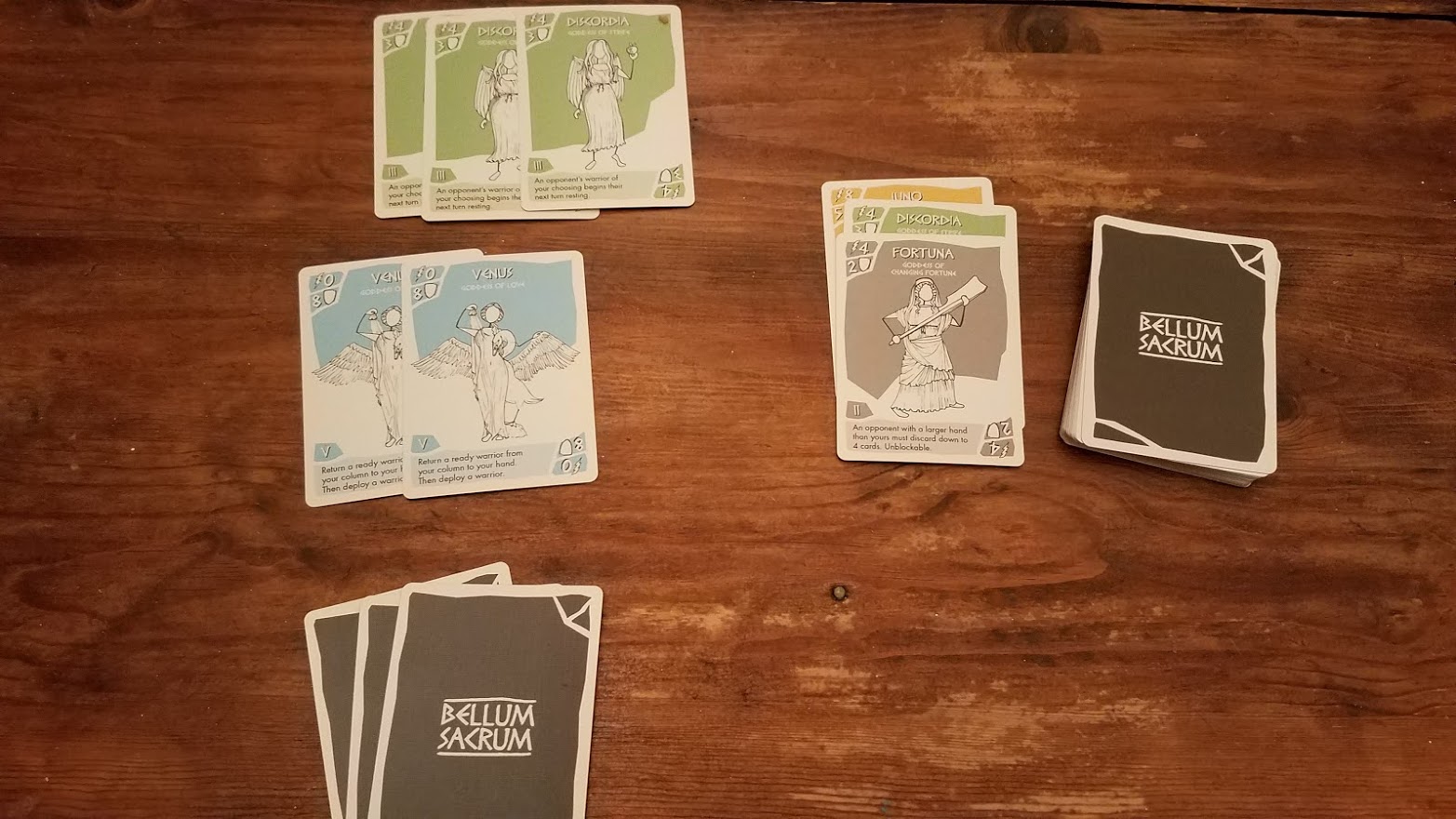
Theme, Artwork and Illustration, Graphic Design and Layout:
Bellum Sacrum uses a cartoon style of artwork that's similar to stick figures. Although it sounds fairly simple, each card type has its own artwork and even though the abilities are the same in your deck as the opponents, the publisher chose to make the artwork different. One deck is composed of male gods while the other deck is composed of female gods. This makes the game feel a lot more worthwhile and it probably adds to the cost of the game to include the different artwork. I personally like the style a lot and think it fits the theme of Greek gods battling to earn trophies. I didn't think the artwork would add to the enjoyment of the game but I found myself comparing the different gods between decks before and after playing.
The layout and design are well-done. You have to be able to quickly add up the strength and defense of your cards that are on the table so making sure the stats are easily visible is paramount. Bow String Games did a good job making the numbers clear and legible.
The invocations all follow the same design and are described on the bottom of the card. The text doesn't interfere with the artwork nor the visibility of the attack and defense of the warriors. I found the cards easy to read and the vital information on the cards easy to identify.
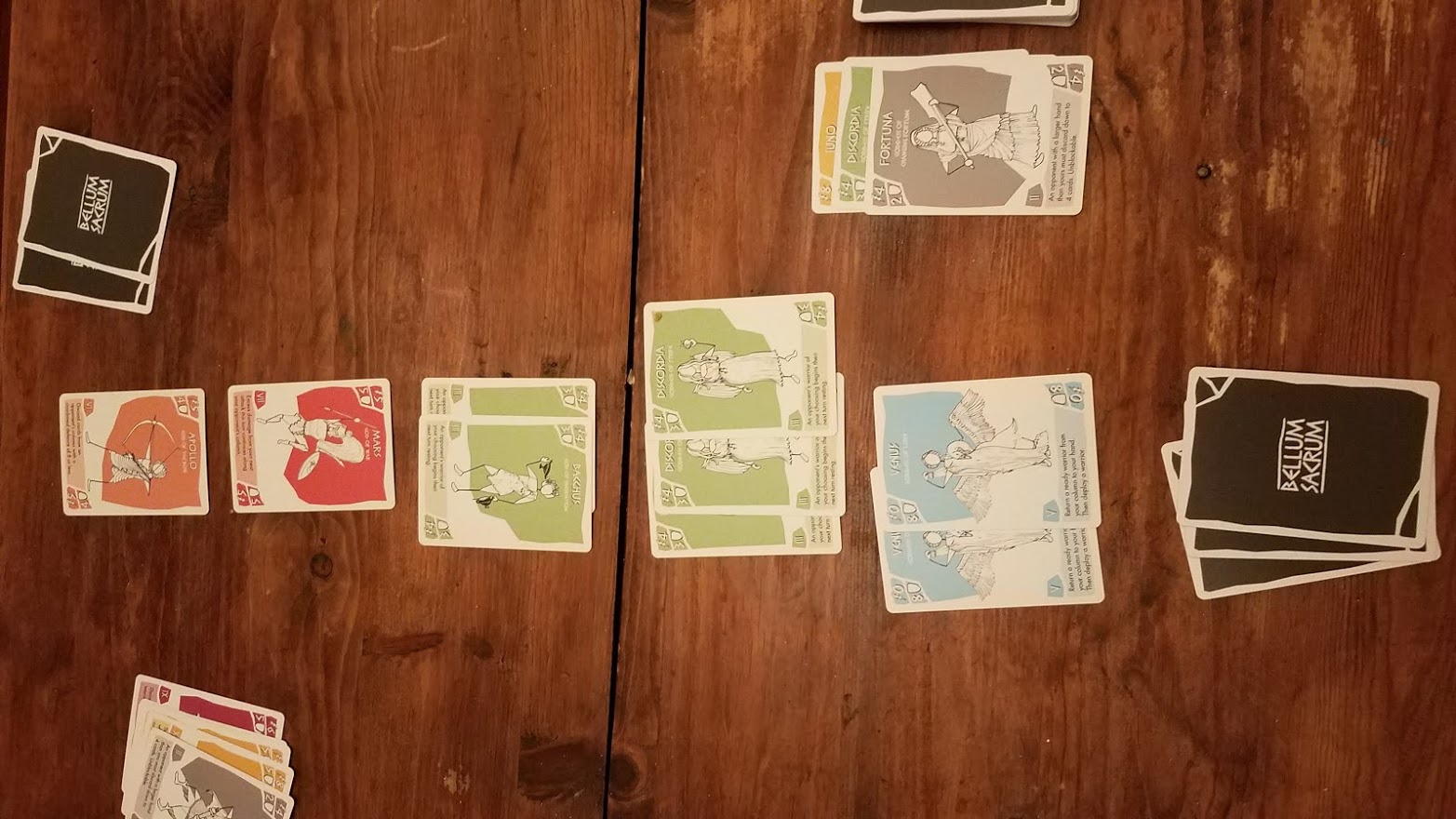
What worked:
I really loved the artwork in the game. I think it helped immerse me in the game and it did feel like the Greek gods were battling each other. The decision making within the game kept providing engaging and thought-provoking ways to build combos with the warriors and invocations. Each round had me trying to figure out the correct order to use actions- invoke first or attack or should I Strengthen then invoke. Finding the right combination in which to use actions is the main aspect of the game and it works well.
Final thoughts:
The game is a simple game and players should get the hang of it fairly quickly. It's a small box game and you'd expect to pull the game out and play through a game quickly. However, I found that the game tended to drag a bit for both myself and my opponent. Players must earn five trophies to win the game and we found that additional games being played to three trophies worked out much better for us. Lastly, both of us in all of our games almost always used the “draw” action as our first action in each turn and felt a bit redundant. You need more cards in hand to give yourself more options and invocations so you always felt you had to do that first. I hate to put myself in the designer's shoes but it felt that card draw should be an automatic thing that happened at the start of your turn to then jump right into the decision making.
If you love simple card play with meaningful choices and enjoy the interesting artwork in the game, you should definitely check out Bellum Sacrum. It provides a good challenge for two players to do some one-on-one battles without digging into bigger games.
